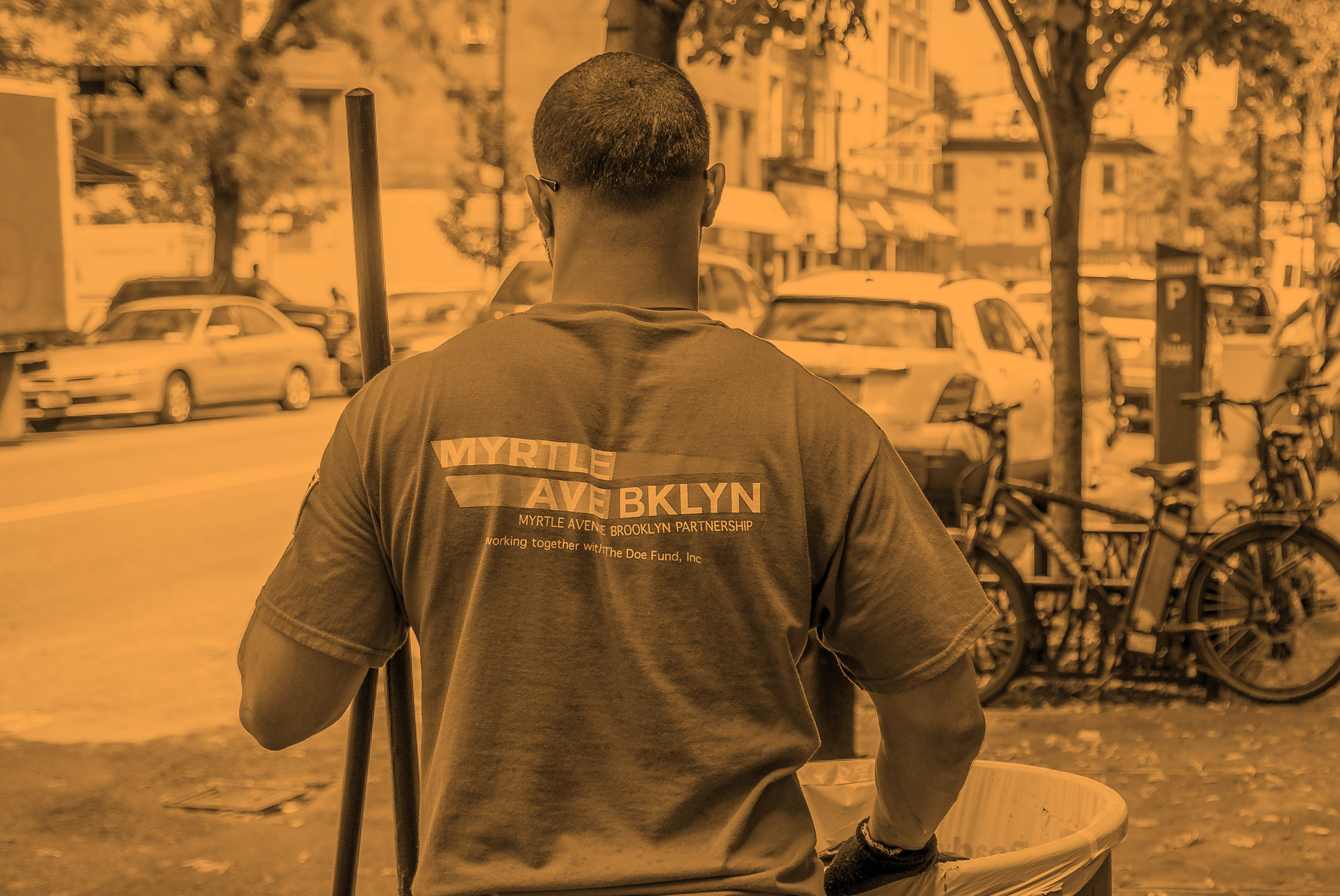
Partnership is possible—and importantly, fruitful—between residents, community organizations, and BIDs. If we want Myrtle Avenue to be the anchor for a healthy, thriving neighborhood, we know that intentional partnership is essential to achieve it.
By Meredith Phillips Almeida
Myrtle Avenue runs through the northern sections of Fort Greene and Clinton Hill in Brooklyn. We are very much a mixed-income community; home to one of the poorest census tracts in the city, sitting across from one where the median income exceeds $80,000. While we do the important work that all business improvement districts (BIDs) do across the city—including supplemental sanitation and management of public space—we know that Myrtle Avenue is changing, and we are compelled to do even more for our community. We recognize that development does not benefit everyone in the same way. We’ve accepted the challenge to continue to welcome and serve all of our neighbors even as that change takes place.
The Myrtle Avenue Brooklyn Partnership is made up of two organizations, a local development corporation (LDC) and a BID, united in a common mission that shapes all of our work. We use our resources and position to advocate for our district, sup-port our businesses, connect neighbors to opportunities and resources, and to elevate our community’s history. Our specific set of values influence the “traditional” BID work that we do. We invest in existing businesses and welcome new ones, sensitive to the delicate retail mix we need to support our economically diverse community.
We engage our stakeholders as partners to strengthen our programs, and we’ve been successful in creating partnerships across many levels and sectors. BIDs have the tools to serve low- to moderate-income communities beyond traditional commercial revitalization, and here are few ways we’ve employed ours to incorporate our neighbors’ voices in our work through partnership:
We convened a hyperlocal community food council to conduct a food assessment that told stories about how food system changes impact people’s lives in this community. The report has inspired and informed our work with community gardeners on NYCHA grounds, a monthly pantry where we deliver 15,000 pounds of fresh produce, free community bike rides in partnership with Citi Bike, and business attraction efforts in the food retail sector.
We created an advisory council made up of residents, organizations, and agencies to create the Park Avenue Pedestrian Safety Plan, with many recommendations already implemented by the City.
We created a senior advisory council to bring visibility to the 6000+ seniors living near our district. They advise us on how to make the avenue more “age friendly,” resulting in campaigns and events that specifically connect seniors to our commercial district.
Our annual Black Art story Month celebrates the area’s legacy as a haven for Black artistry, filling a gap for local cultural program-ming and driving foot traffic to the corridor. Black Artstory Month creates innovative partnerships between local artists, community organizations, and businesses to inspire a dialogue about history, social justice, and activism through art.
Over the infrastructure of meaningful partnership within our community we have strengthened our work, and we’ll continue to innovate to engage our neighbors on Myrtle Avenue. Business Improvement
–